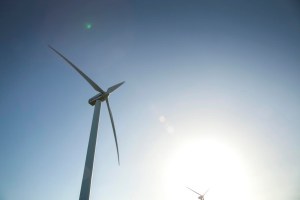 The idea of reuse embodies the goal of guiding our society to a more sustainable reality. Efforts of recycling, or even upcycling, are continuing to gain strength with how we can utilize resource streams that were once thought of as only waste. Recycling efforts have taken hold at the municipal and state level across the country to help mitigate the amount of waste that is headed for landfills, but it is rare to see the idea of reuse applied to infrastructural systems that offer a reconditioned life for extended service.
The idea of reuse embodies the goal of guiding our society to a more sustainable reality. Efforts of recycling, or even upcycling, are continuing to gain strength with how we can utilize resource streams that were once thought of as only waste. Recycling efforts have taken hold at the municipal and state level across the country to help mitigate the amount of waste that is headed for landfills, but it is rare to see the idea of reuse applied to infrastructural systems that offer a reconditioned life for extended service.
The Wind for Prosperity project aims to harvest existing wind turbines for reconditioning before deploying them in new sites in the rural developing world, bringing access to affordable, reliable power to some of the populations that need it the most. In a partnership between Vestas Wind and Masdar, the program strives to bring wind power to 1 million people in 100 communities within the next 3 years.
I had the opportunity today to listen to a panel of industry experts discussing Wind for Prosperity at Abu Dhabi’s Sustainability Week 2014. Morten Albaek, CMO at Vestas, described the early beginnings of the program that grew from finding the overlap between over 1 billion people living with constrained access to electricity with areas that experienced sustained wind speeds of over 7 meters per second (roughly 15.7 miles per hour). The result was identifying areas of opportunity to reliably harvest wind and create sources of clean energy to developing communities encompassing 50 to 100 million people.
 That alone was a striking goal, but the infrastructure planned for deployment are existing V-27 and V-47 Vestas wind turbines, with nameplate capacities of 225 kilowatts and 660 kilowatts respectively. With the goal of being replaced with newer, larger models, these components of green infrastructure will be reconditioned before being re-deployed to begin a second life of clean energy production, this time bringing electricity that will change the market reality of small communities.
That alone was a striking goal, but the infrastructure planned for deployment are existing V-27 and V-47 Vestas wind turbines, with nameplate capacities of 225 kilowatts and 660 kilowatts respectively. With the goal of being replaced with newer, larger models, these components of green infrastructure will be reconditioned before being re-deployed to begin a second life of clean energy production, this time bringing electricity that will change the market reality of small communities.
With a pilot project slated for a target in Kenya, Wind for Prosperity looks for communities that often rely on diesel generation for their limited access to power. The resulting installation of Vestas turbines will not only reduce carbon emissions, but also reduce the cost of electricity by anywhere from 30 to 70% according to panelist Jose Maria Figueres, President of the Carbon War Room and former President of Costa Rica. According to Albaek, “at 7 meters per second, whether there is existing diesel or no diesel, wind is the most competitive energy option that exists.”
All panelists emphasized that the project isn’t a case of corporate philanthropy. Anders Runevad, CEO of Vestas, noted that “Wind for Prosperity is not about charity, it is about business.” Each project has a foundation in commercial viability that returns profits to partners and investors from power purchase agreements with local utilities. Though increases in profits and capacity will remain small relative to the rest of the Vestas company portfolio, the program will help demonstrate the viability of clean energy projects that can help lift communities out of poverty without adding to the net production of global carbon emissions.
Projects like this one highlight the opportunities for success from both public/private partnerships and constantly reassessing the latent value of existing assets. I’ve previously discussed similar options for extending the use of electrical vehicle batteries as energy storage solutions for smaller systems not unlike those proposed by Wind for Prosperity. With the real opportunities for sustainable progress lying in proposals for systems of systems, it’s plausible to believe that reusing and combining multiple infrastructural components could only further bolster projects like these and the value they can bring to communities.
Image Credit: Courtesy of Wind for Prosperity
Full Disclosure: Travel expenses to Abu Dhabi Sustainability Week were covered by Masdar
